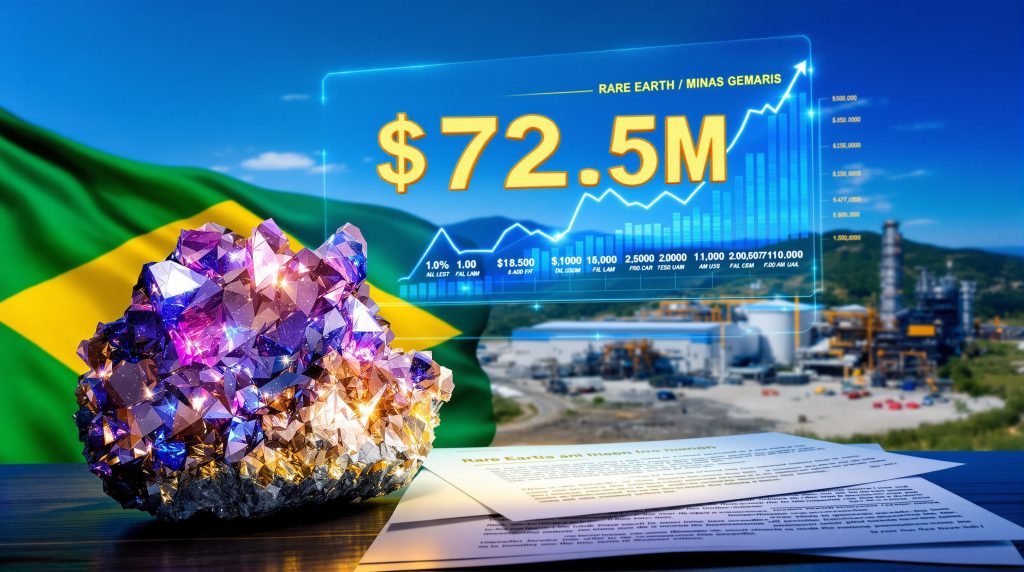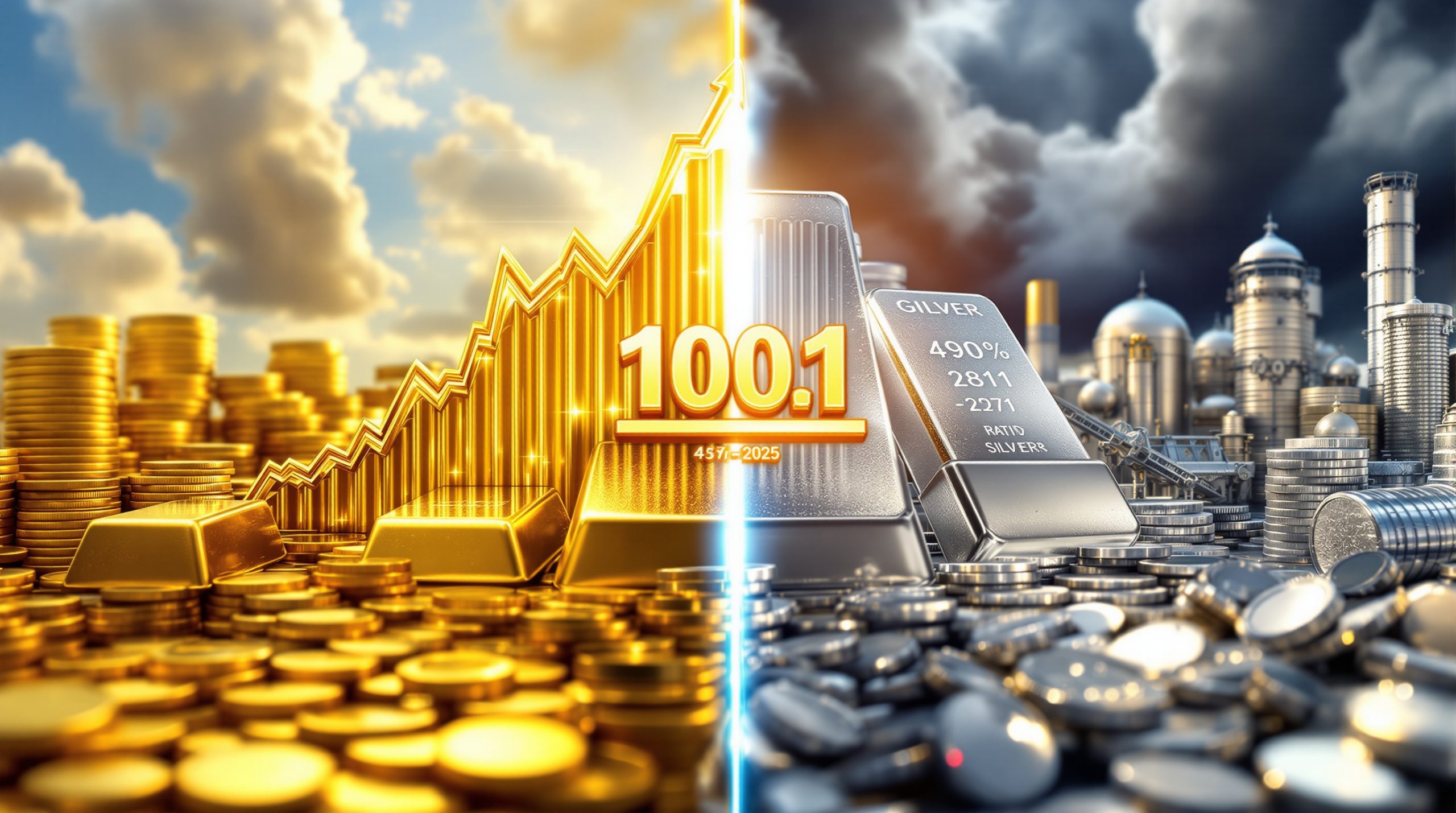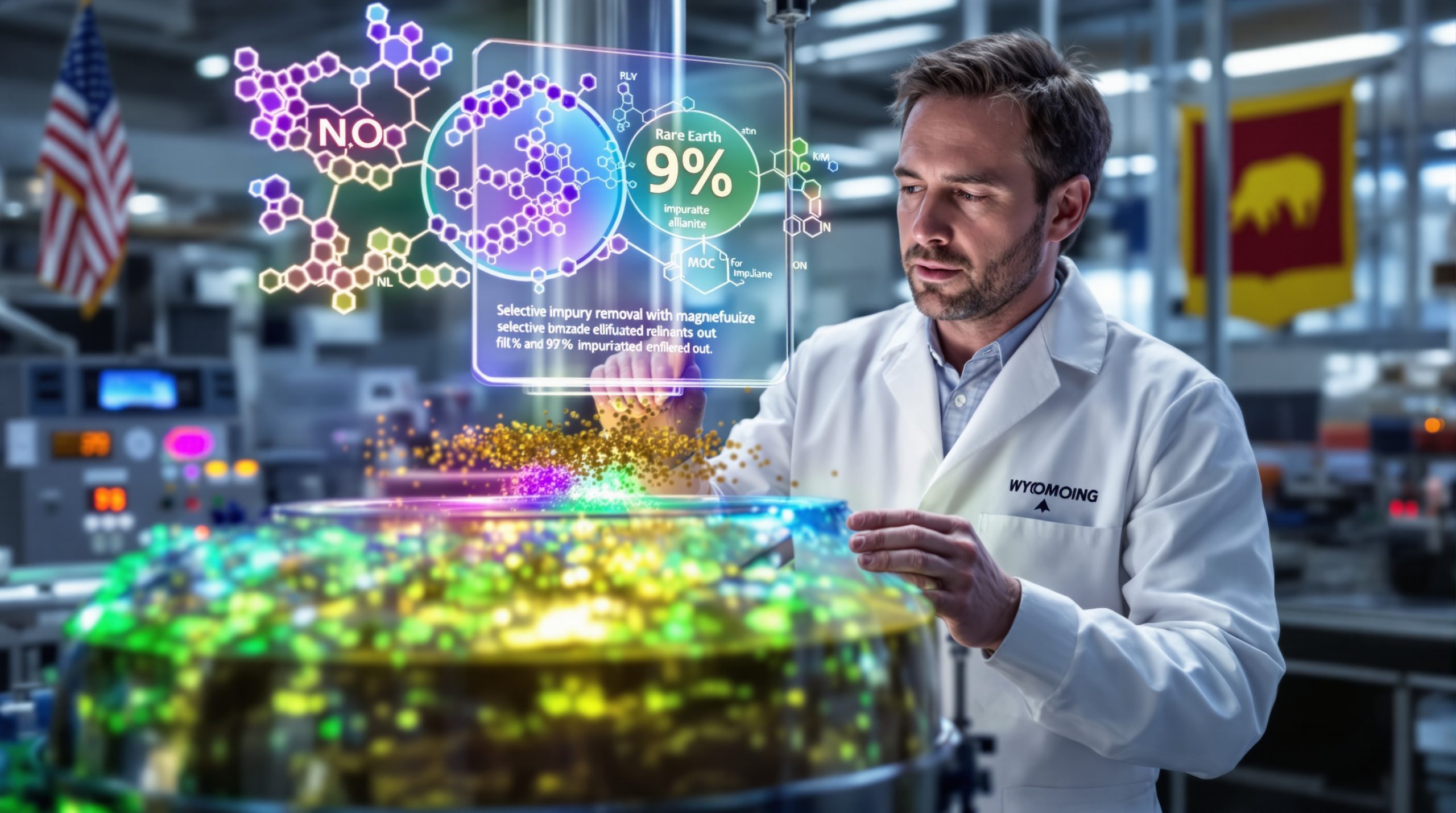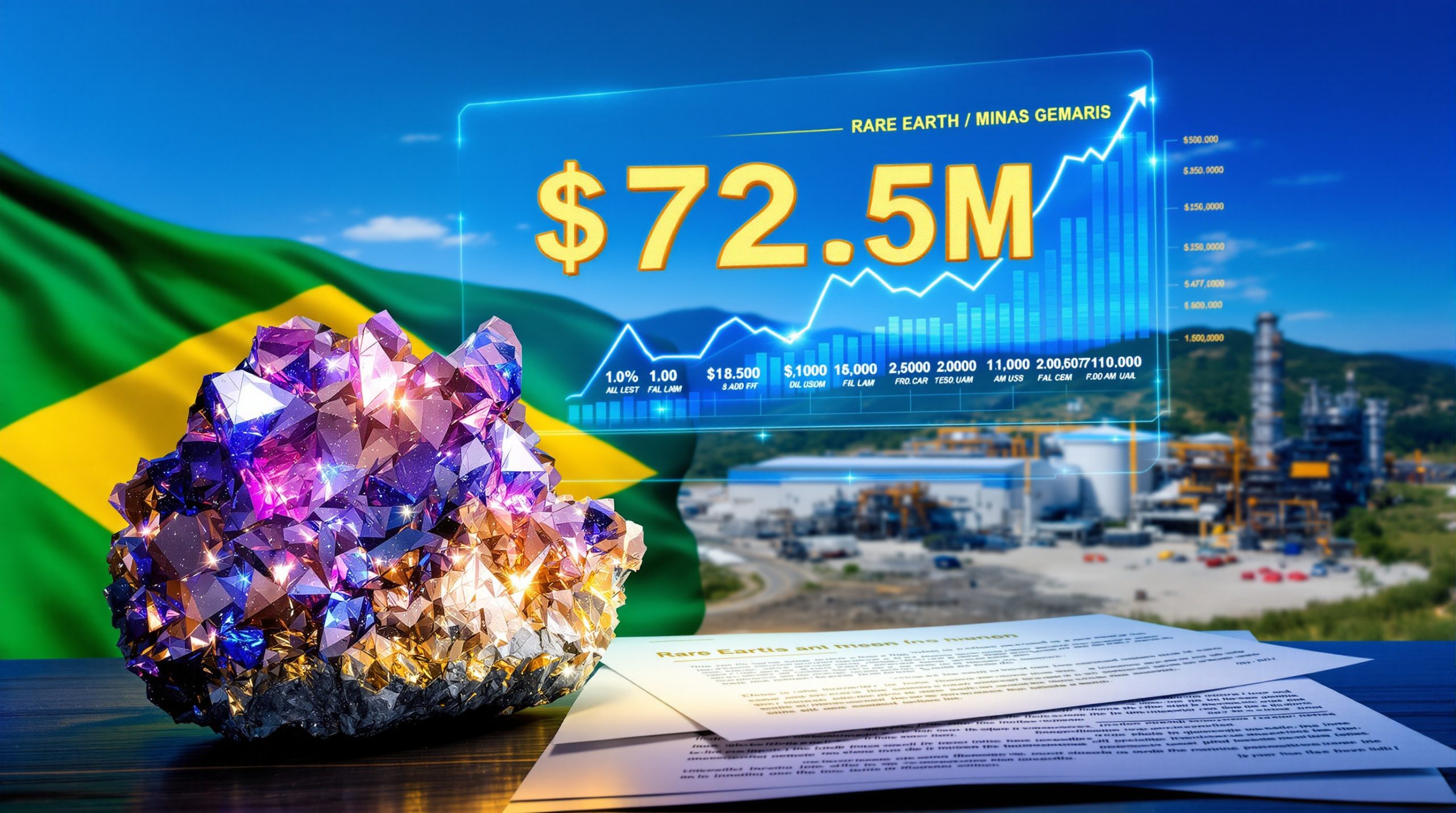ST GEORGE MINING SECURES $72.5M FUNDING FOR ARAXÁ RARE EARTHS PROJECT
How Has St George Mining Attracted Major Investment for Its Brazilian Project?
St George Mining (ASX: SGQ) has successfully secured $72.5 million through a strategic capital raising to advance its Araxá rare earths-niobium project in Brazil. The placement involved issuing 725 million new ordinary shares at $0.10 each, significantly bolstering the company's financial position for upcoming development activities.
The placement attracted substantial attention from prominent investors, most notably Hancock Prospecting, led by mining magnate Gina Rinehart. Hancock acquired 225 million shares, representing approximately 31% of the placement, and emerged as a significant shareholder in St George Mining. This investment by one of Australia's most successful mining companies provides strong validation for the project's potential.
Originally, St George Mining had targeted a smaller placement, but increased the size due to overwhelming investor interest. The capital raising strategies attracted major North American and European institutional funds, along with local Australian institutions and existing shareholders who increased their positions.
The strong investor response indicates growing market recognition of rare earth elements as strategic resources essential for the green energy transition and advanced technologies. With China controlling approximately 70% of global rare earth production and 90% of processing capacity, projects outside this dominant supply chain are attracting premium valuations.
What Makes the Araxá Project a World-Class Rare Earths Opportunity?
The Araxá project stands out with its impressive mineral resource estimate, comprising 40.6 million tonnes at 4.13% total rare earth oxides (TREO) and 41.2 million tonnes at 0.68% niobium. This grade places it among the more attractive rare earth deposits globally, as average grades worldwide typically range between 1-8% TREO.
The project location in Minas Gerais, Brazil offers strategic advantages for development. This region is already established as a mining powerhouse, generating approximately 29% of Brazil's mineral production value, worth around $15.8 billion in 2024.
What truly distinguishes Araxá is its portfolio of critical rare earth elements, including samarium, lutetium, terbium, and gadolinium. These elements feature prominently on the U.S. Department of Interior's critical minerals energy transition list due to their essential roles in advanced technologies and limited supply sources.
Terbium, which is present at Araxá, is particularly valuable for permanent magnets used in electric vehicles and green energy technologies. Global terbium oxide production reached only approximately 160 tonnes in 2024, highlighting its scarcity. Similarly, gadolinium, crucial for medical imaging and nuclear applications, saw global production of around 950 tonnes in 2024.
Perhaps most notable is the presence of lutetium, the most expensive rare earth element with annual global production of just 10-15 tonnes. This element is essential for PET scan detectors and petroleum cracking catalysts, commanding premium prices in specialized markets.
The following table illustrates the current resource estimate at Araxá:
| Resource Category | Tonnage (Mt) | TREO Grade (%) | Niobium Grade (%) |
|---|---|---|---|
| Rare Earth Elements | 40.6 | 4.13% | – |
| Niobium | 41.2 | – | 0.68% |
How Will St George Mining Allocate the $72.5M Capital Injection?
The substantial funding will primarily support comprehensive feasibility studies at the Araxá project, establishing a clear pathway toward a financial investment decision (FID). This process typically involves several stages of increasingly detailed technical and economic assessments.
Based on industry benchmarks, pre-feasibility studies for rare earth projects typically cost between $3-8 million, while definitive feasibility studies range from $8-15 million for projects of similar scale. The studies will include:
- Technical and engineering assessments to optimize mining and processing methods
- Detailed metallurgical test work to refine recovery rates and processing technologies
- Environmental and social impact assessments crucial for permitting
- Market analysis and offtake strategy development
- Project financing structures and partnership frameworks
A significant portion of the funding will also support an aggressive drilling program already underway at Araxá. This program aims to expand and upgrade the existing mineral resource estimate by:
- Testing extension targets beyond the current resource boundaries
- Upgrading inferred resources to indicated and measured categories
- Defining additional high-grade zones to potentially improve project economics
- Enhancing geological understanding to optimize future mine planning
Resource definition drilling for rare earth deposits typically costs $200-400 per meter in Brazil, representing a substantial investment in the project's future value. The drilling program is strategically important as it could potentially increase the overall project valuation prior to development decisions.
Brazilian environmental licensing typically follows a three-phase process: Preliminary License (LP), Installation License (LI), and Operating License (LO). Baseline environmental studies alone for large mining projects in Brazil typically cost $2-5 million and represent a critical path item for development timelines.
Why Does Araxá's Infrastructure Create Competitive Advantage?
One of Araxá's most compelling attributes is its favorable infrastructure position, providing significant competitive advantages compared to many remote rare earth projects globally. The project benefits from Brazil's well-developed mining sector in Minas Gerais state.
Brazil's electricity matrix is 89% renewable, primarily hydroelectric, making it one of the cleanest energy grids globally. This provides both environmental benefits and potential cost advantages, with industrial electricity costs in Minas Gerais averaging approximately $0.11-0.13 per kWh—competitive rates for energy-intensive processing operations.
The project's location provides ready access to transportation networks, including established road infrastructure connecting to major ports for export markets. This accessibility significantly reduces capital requirements compared to greenfield projects requiring extensive infrastructure development.
Additionally, the Minas Gerais region offers access to an experienced mining workforce. The Brazilian mining sector employed approximately 215,000 people directly in 2024, with Minas Gerais representing about 35% of that employment. This established labor pool provides skilled workers familiar with large-scale mining operations.
St George Mining's Executive Chair John Prineas emphasized these advantages, noting that "Araxá and its favorable project logistics—ready access to transport infrastructure, renewable power, and workforce—is attracting substantial investor interest at a time when there is unprecedented action globally by both governments and private enterprise to establish new and secure supply chains for critical minerals products."
These infrastructure advantages potentially reduce both capital expenditure requirements and development timelines, key factors in attracting the substantial investment the company has secured.
What Strategic Relationships Is St George Mining Leveraging in Brazil?
St George Mining has strategically assembled an experienced in-country team to drive the Araxá project forward. The company has established relationships with key regulatory authorities and stakeholders in Brazil, positioning it to navigate the complex permitting and development landscape effectively.
The Brazilian mining sector operates under the Mining Code (Decree-Law 227/1967, updated by Law 13,575/2017), with mining concessions granted for up to 50 years and renewable. Understanding and effectively working within this regulatory framework is essential for project success.
Brazil received approximately $4.2 billion in mining sector foreign direct investment in 2024, representing around 8% of total FDI in the country. This demonstrates the country's ongoing attractiveness for junior mining investments, despite regulatory complexities.
Several international mining companies have successfully developed projects in Minas Gerais, providing precedent for St George Mining's efforts:
- Anglo American operates the Minas-Rio iron ore project with production of approximately 18 million tonnes annually
- Kinross Gold runs the Paracatu gold mine, producing approximately 477,000 gold ounces in 2023
These examples demonstrate that international companies can successfully navigate Brazilian mining regulations and community relationships to develop profitable operations. St George Mining appears to be following similar strategies by building local relationships and expertise.
How Does This Project Address Critical Mineral Supply Chain Concerns?
The Araxá project aligns perfectly with global initiatives to diversify critical mineral supply chains, particularly for rare earth elements currently dominated by Chinese production and processing. This alignment with strategic national interests is a key driver of investor interest.
Major economies have implemented policies specifically targeting rare earth supply security:
- The United States Inflation Reduction Act (2022) provides production tax credits of 10% for critical minerals including rare earths and 10% for processing
- The U.S. Defense Production Act Title III has allocated over $285 million for rare earth processing and magnet manufacturing since 2021
- The European Union Critical Raw Materials Act (2024) sets targets for at least 10% of annual EU consumption to be from EU extraction and 40% from EU processing by 2030
- Australia's $2 billion Critical Minerals Facility provides loans and equity financing for critical minerals projects
These policy initiatives create a favorable environment for new rare earth projects outside China, potentially providing both market opportunities and government support mechanisms for Araxá's development.
The global rare earth oxide demand is projected to grow from approximately 350,000 tonnes in 2024 to 510,000 tonnes by 2030, representing a 6.5% compound annual growth rate. Electric vehicle production alone is expected to drive rare earth magnet demand from 32,000 tonnes in 2024 to 87,000 tonnes by 2030.
Similarly, the niobium component of the Araxá project addresses critical supply concerns, as Brazil's CBMM currently controls approximately 80% of global niobium production. A new source would provide supply diversification for this essential steel-alloying element.
What Timeline and Development Pathway Is St George Mining Pursuing?
While specific development timelines will be refined through the upcoming feasibility studies, St George Mining has indicated it is pursuing an accelerated development pathway for the Araxá project. Industry benchmarks suggest several key phases:
-
Resource Definition and Expansion (Current Phase)
- Completing the current drilling program
- Updating the mineral resource estimate
- Defining project parameters for feasibility studies
-
Feasibility Studies (Next 12-24 months)
- Pre-feasibility study completion
- Definitive feasibility study advancement
- Processing technology selection and optimization
- Environmental baseline studies and permit applications
-
Project Financing and FID (24-36 months)
- Securing project financing structures
- Establishing strategic partnerships
- Obtaining key permits and approvals
- Making final investment decision
-
Construction and Commissioning (36-48 months)
- Site preparation and infrastructure development
- Processing plant construction
- Commissioning and ramp-up activities
- First production of rare earth and niobium products
The average time from resource definition to definitive feasibility study completion for comparable rare earth projects is typically 18-36 months. However, St George Mining may potentially compress this timeline given the strong financial backing and strategic importance of the project.
Executive Chair John Prineas has stated: "We believe the Araxá project has the potential to be developed under an accelerated timeline to become one of the few next-generation rare earths and niobium producers worldwide, something investors are wanting to be part of."
What Market Factors Are Driving Investor Interest in Rare Earths and Niobium?
The strong investor response to St George Mining's capital raise reflects growing recognition of the strategic importance of rare earths and niobium in the global economy. Several market factors are driving this interest:
Rare Earth Market Dynamics:
-
Growing EV Demand: Global electric vehicle sales reached 14.2 million units in 2024, representing 18% of total vehicle sales, up from 14% in 2023. Each EV requires approximately 1-2kg of rare earth magnets.
-
Renewable Energy Growth: Wind energy capacity additions totaled 117 GW in 2024, with offshore wind installations (which use more rare earth magnets per MW) accelerating. Wind turbine rare earth permanent magnet demand is estimated at 12,000 tonnes in 2024, projected to reach 25,000 tonnes by 2030.
-
Supply Constraints: Chinese dominance of the rare earth supply chain creates both political and market risks, driving demand for alternative sources.
-
Price Trends: While rare earth prices have moderated from 2022 peaks (NdPr oxide averaged $58,000/tonne in 2024, down from $92,000/tonne peak in 2022), they remain at historically strong levels, supporting project economics.
Niobium Market Factors:
-
Infrastructure Development: Global infrastructure spending continues to drive demand for high-strength low-alloy (HSLA) steels, which use niobium as a key alloying element.
-
Growing Applications: Niobium use is expanding in aerospace, automotive, and energy sectors, with HSLA steel production expected to grow from 585 million tonnes in 2024 to 710 million tonnes by 2030.
-
Limited Production Sources: With approximately 80% of global niobium production controlled by a single company (CBMM in Brazil), new sources are strategically valuable.
-
Stable Pricing: Ferroniobium (FeNb) standard-grade price remained relatively stable at approximately $44-47/kg in 2024, providing predictable economics for project planning.
The International Energy Agency projects that clean energy technologies will require six times more critical minerals by 2040 compared to 2020 levels, with rare earths among the most supply-constrained. This fundamental supply-demand imbalance underpins long-term investor interest in the sector.
What Potential Challenges and Risk Factors Must Be Addressed?
While the Araxá project shows significant promise, several challenges and risk factors must be successfully navigated for the project to achieve its potential:
Technical Considerations:
-
Metallurgical Complexity: Rare earth processing involves complex, multi-stage separation processes that must be optimized for the specific mineralogy at Araxá.
-
Radioactivity Management: Many rare earth deposits contain naturally occurring radioactive materials (thorium and uranium), requiring specialized handling and waste management solutions.
-
Recovery Optimization: Maximizing recovery rates for all valuable elements while minimizing processing costs presents ongoing technical challenges.
-
Processing Technology Selection: Choosing between established but expensive solvent extraction methods and newer technologies involves balancing risk and potential reward.
Regulatory Factors:
-
Environmental Permitting: Brazil's three-stage environmental licensing process (LP, LI, LO) typically takes 24-48 months for large mining projects, potentially creating timeline challenges.
-
Community Relationships: Successful project development requires maintaining strong relationships with local communities and addressing social impact concerns.
-
Changing Regulations: Mining regulations and royalty structures in Brazil have evolved over time, creating potential regulatory uncertainty.
Market Considerations:
-
Price Volatility: Rare earth prices have historically shown significant volatility, creating challenges for project financing and economic forecasting.
-
Emerging Competition: Several rare earth projects are advancing globally, potentially creating future supply competition.
-
Processing Capacity: Limited rare earth processing capacity outside China creates both opportunities and challenges for new producers.
-
Offtake Agreements: Securing favorable offtake agreements with end-users is critical for project financing but requires navigating complex market relationships.
Despite these challenges, St George Mining's strong financial position following the capital raise positions it well to address these issues through comprehensive feasibility studies and strategic partnerships.
FAQs About St George Mining's Araxá Project Development
What makes the Araxá project different from other rare earth developments?
The Araxá project distinguishes itself through a combination of high-grade mineralization (4.13% TREO), established infrastructure access in Minas Gerais, and the presence of multiple high-value rare earth elements. Unlike many greenfield rare earth projects, Araxá benefits from proximity to existing mining operations and processing capabilities in an established mining region.
How does this capital raise compare to previous funding efforts by St George Mining?
This $72.5 million capital raise represents the largest funding round in the company's history, significantly exceeding previous financing efforts. The scale and high-profile nature of the investors involved, particularly Hancock as strategic investor, signal a transformation in the company's development trajectory and market perception.
What timeline is anticipated for bringing the Araxá project into production?
While specific production timelines will be determined through upcoming feasibility studies, industry benchmarks suggest initial production could potentially begin within 3-4 years, subject to successful study outcomes and permitting processes. St George Mining has indicated it is pursuing an accelerated development pathway to capitalize on favorable market conditions for critical minerals.
How does the involvement of Hancock Prospecting impact the project's prospects?
Hancock Prospecting's substantial investment provides both financial support and strategic validation of the project's potential. The involvement of such a prominent mining investor with extensive development experience could potentially accelerate project advancement through industry connections, development expertise, and additional financial resources if needed.
What separates successful rare earth projects from those that fail to reach production?
Successful rare earth projects typically feature five key characteristics: 1) high-grade mineralization with favorable mineralogy, 2) established processing pathways, 3) strong financial backing, 4) clear offtake strategies, and 5) experienced management teams. The Araxá project appears to be positioning itself with these success factors in mind, with particular strength in grade quality and financial backing following the recent capital raise.
What processing challenges must be overcome for rare earth element extraction?
Rare earth processing typically involves multiple complex stages, including physical beneficiation, chemical leaching, solvent extraction for separation, and product refining. Each deposit presents unique challenges based on its specific mineralogy, particularly regarding the separation of individual rare earth elements which have very similar chemical properties. St George Mining will need to develop a processing flowsheet specifically optimized for the Araxá mineralization.
How does the Brazilian regulatory environment impact development timelines?
Brazil's mining regulations require multiple permits, including mining concessions from the National Mining Agency (ANM) and environmental licenses from state or federal authorities. The three-stage environmental licensing process alone typically takes 24-48 months for large mining projects. However, Minas Gerais has a well-established framework for mining approvals, potentially streamlining this process compared to less-developed mining jurisdictions.
What potential exists for project expansion beyond current resource estimates?
The current drilling program at Araxá aims to expand and upgrade the existing mineral resource. Given that many rare earth deposits in similar geological settings have shown significant expansion potential with additional drilling, there is reasonable expectation that the resource could grow substantially. Additionally, the depth extensions of the deposit remain to be fully tested, providing another avenue for potential resource growth.
The St George Mining Araxá project capital raise represents a significant milestone in the company's evolution and aligns perfectly with broader mining industry trends toward securing critical minerals essential for the global energy transition. As one of the few advanced rare earth projects in a favorable jurisdiction outside the dominant Chinese supply chain, Araxá's development trajectory will be closely watched across the global mining landscape.
Want to Identify Mineral Discoveries Before the Market Does?
Discover how you can gain a market-leading edge with real-time notifications on significant ASX mineral discoveries through Discovery Alert's proprietary Discovery IQ model at https://discoveryalert.com.au/discoveries/, giving you actionable insights on promising opportunities like St George Mining's rare earth project.




